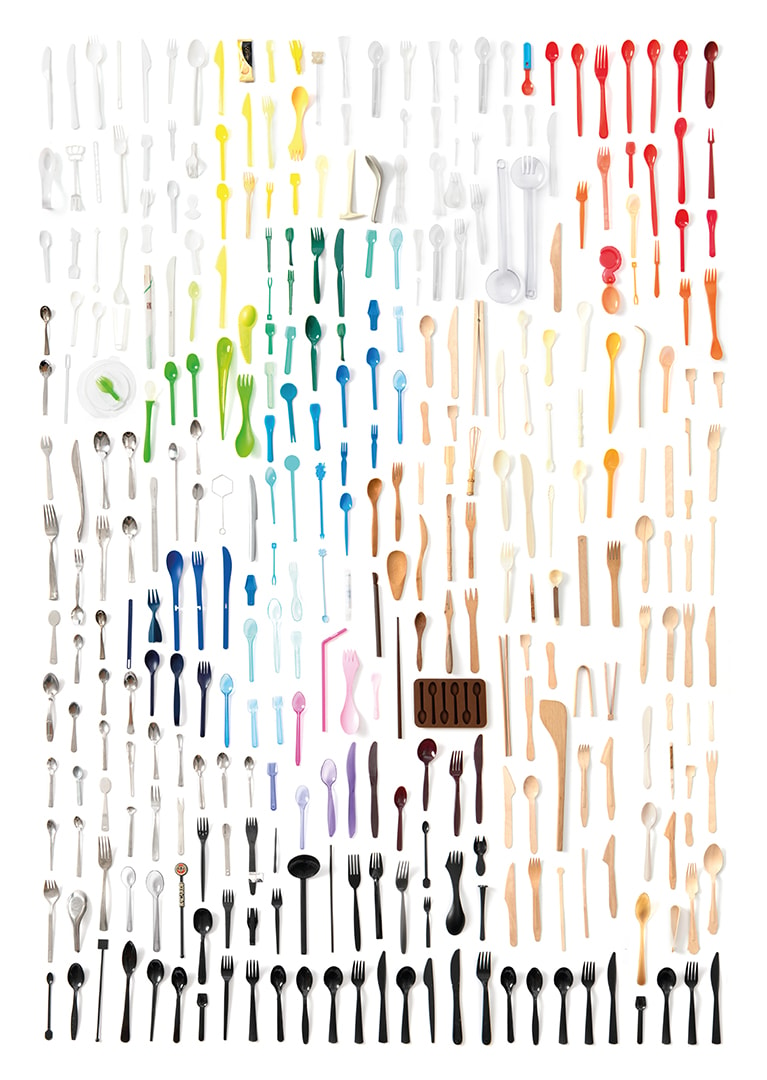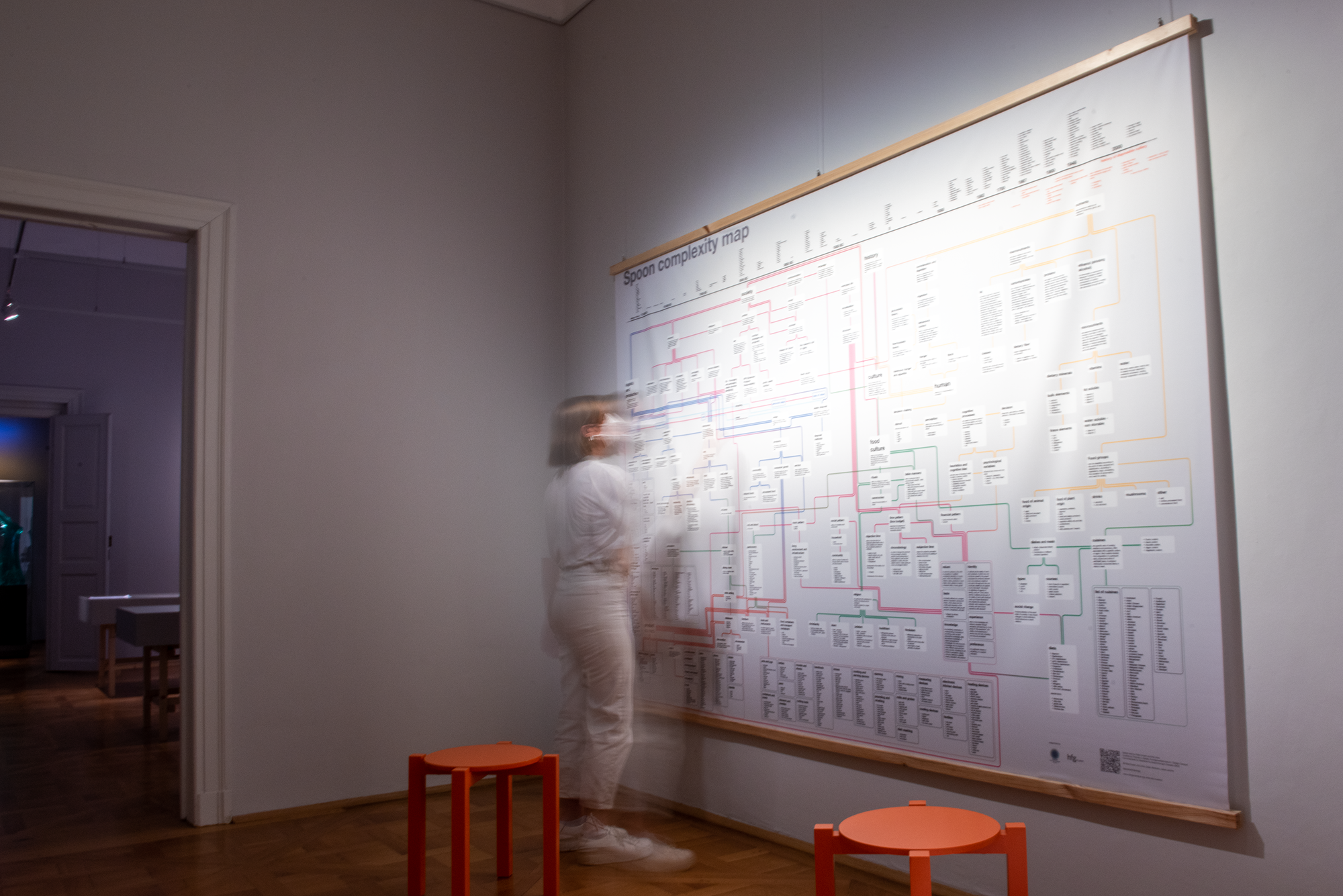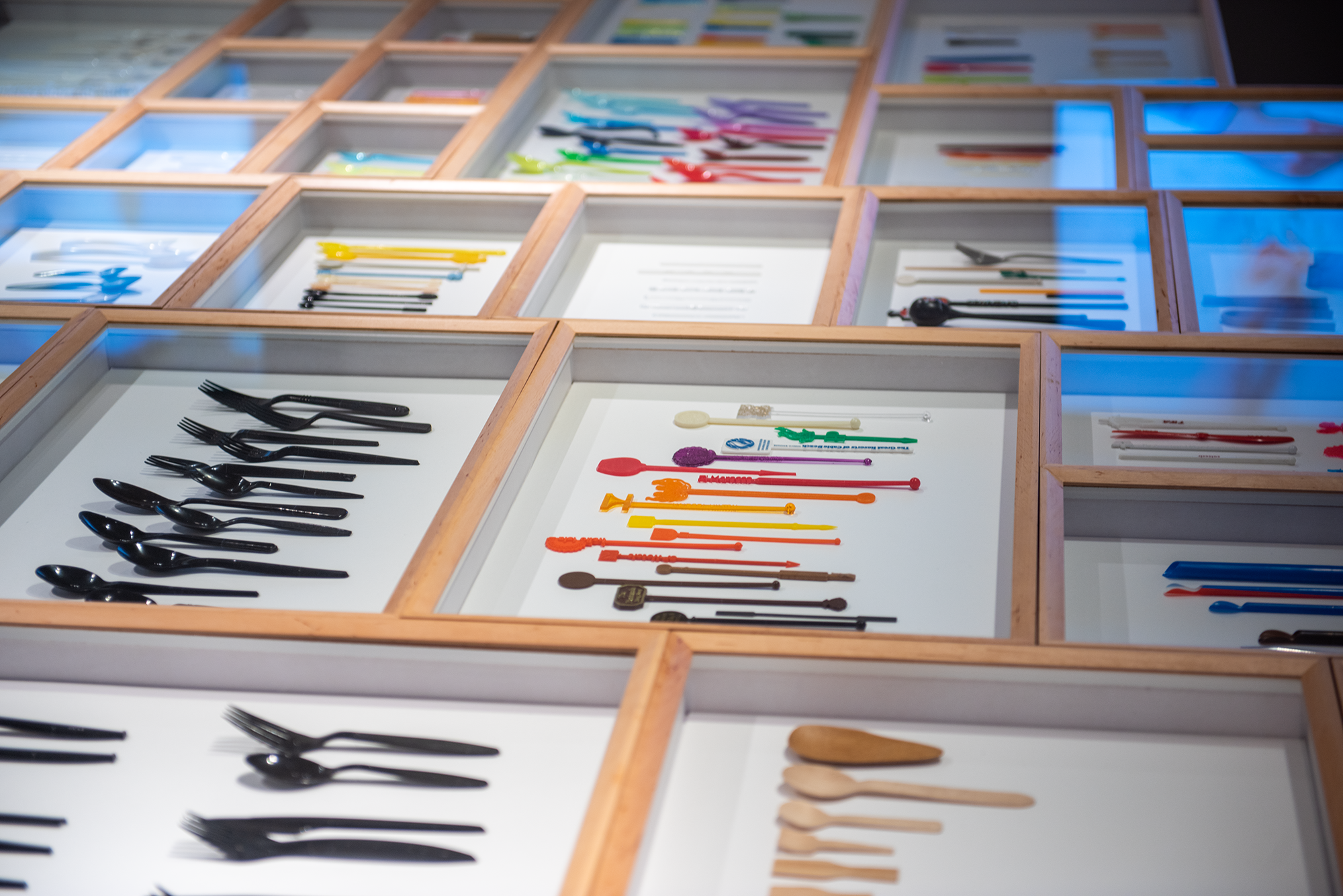Lukas Loscher
work
about
How might we reveal the cultural systems behind disposable design?
Design Research — Cultural Systems
This speculative design research project explored disposable cutlery as a symbol of globalised consumer behaviour.
Through giga-mapping and cultural inquiry, we visualised how single-use objects embody complex economic, material, and social systems — challenging the notion of disposability itself.
Design Research • System Mapping • Cultural Analysis
Researcher & Designer — 4 months

Challenge
Making the invisible visible
Disposable cutlery seems insignificant, yet it embodies entire networks of production, distribution, and waste — each tied to broader questions of convenience and consumption.
The challenge was to uncover and make visible these invisible relationships, translating systemic complexity into a form of critical reflection through design.
Exhibition Details "Spoon Archaeology" © Dylan McGuire

Approach
Mapping systemic entanglements
The project combined design research with cultural analysis.
We conducted desk research, traced material lifecycles, and assembled insights through giga-mapping — layering social, ecological, and historical dimensions of disposability.
The map became both process and outcome: a shared artefact to think through complexity, not to simplify it.

Outcome
Design as critique
The outcome was a large-scale visualisation and accompanying essay that framed disposability as a cultural construct rather than a material property.
The work sparked discussions around design’s role in systemic awareness — shifting attention from creating new products to reinterpreting existing systems.
Exhibition Details "Spoon Archaeology" © Dylan McGuire

Exhibition Details "Spoon Archaeology" © Heiko Prigge

Exhibition Details "Spoon Archaeology" © Heiko Prigge
→
previous project
next project
→
© 2025 Lukas Loscher. All rights reserved.
How might we reveal the cultural systems behind disposable design?
Design Research — Cultural Systems
This speculative design research project explored disposable cutlery as a symbol of globalised consumer behaviour.
Through giga-mapping and cultural inquiry, we visualised how single-use objects embody complex economic, material, and social systems — challenging the notion of disposability itself.
Design Research • System Mapping • Cultural Analysis
Researcher & Designer — 4 months

Challenge
Making the invisible visible
Disposable cutlery seems insignificant, yet it embodies entire networks of production, distribution, and waste — each tied to broader questions of convenience and consumption.
The challenge was to uncover and make visible these invisible relationships, translating systemic complexity into a form of critical reflection through design.
Exhibition Details "Spoon Archaeology" © Dylan McGuire

Approach
Mapping systemic entanglements
The project combined design research with cultural analysis.
We conducted desk research, traced material lifecycles, and assembled insights through giga-mapping — layering social, ecological, and historical dimensions of disposability.
The map became both process and outcome: a shared artefact to think through complexity, not to simplify it.

Outcome
Design as critique
The outcome was a large-scale visualisation and accompanying essay that framed disposability as a cultural construct rather than a material property.
The work sparked discussions around design’s role in systemic awareness — shifting attention from creating new products to reinterpreting existing systems.
Exhibition Details "Spoon Archaeology" © Dylan McGuire

Exhibition Details "Spoon Archaeology" © Heiko Prigge

Exhibition Details "Spoon Archaeology" © Heiko Prigge
→
previous project
next project
→
© 2025 Lukas Loscher. All rights reserved.
How might we reveal the cultural systems behind disposable design?
Design Research — Cultural Systems
This speculative design research project explored disposable cutlery as a symbol of globalised consumer behaviour.
Through giga-mapping and cultural inquiry, we visualised how single-use objects embody complex economic, material, and social systems — challenging the notion of disposability itself.
Design Research • System Mapping • Cultural Analysis
Researcher & Designer — 4 months

Challenge
Making the invisible visible
Disposable cutlery seems insignificant, yet it embodies entire networks of production, distribution, and waste — each tied to broader questions of convenience and consumption.
The challenge was to uncover and make visible these invisible relationships, translating systemic complexity into a form of critical reflection through design.
Exhibition Details "Spoon Archaeology" © Heiko Prigge

Approach
Mapping systemic entanglements
The project combined design research with cultural analysis.
We conducted desk research, traced material lifecycles, and assembled insights through giga-mapping — layering social, ecological, and historical dimensions of disposability.
The map became both process and outcome: a shared artefact to think through complexity, not to simplify it.

Outcome
Design as critique
The outcome was a large-scale visualisation and accompanying essay that framed disposability as a cultural construct rather than a material property.
The work sparked discussions around design’s role in systemic awareness — shifting attention from creating new products to reinterpreting existing systems.
Exhibition Details "Spoon Archaeology" © Dylan McGuire

Exhibition Details "Spoon Archaeology" © Heiko Prigge

Exhibition Details "Spoon Archaeology" © Heiko Prigge
→
previous project
next project
→
© 2025 Lukas Loscher. All rights reserved.